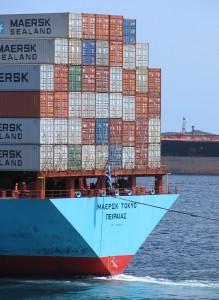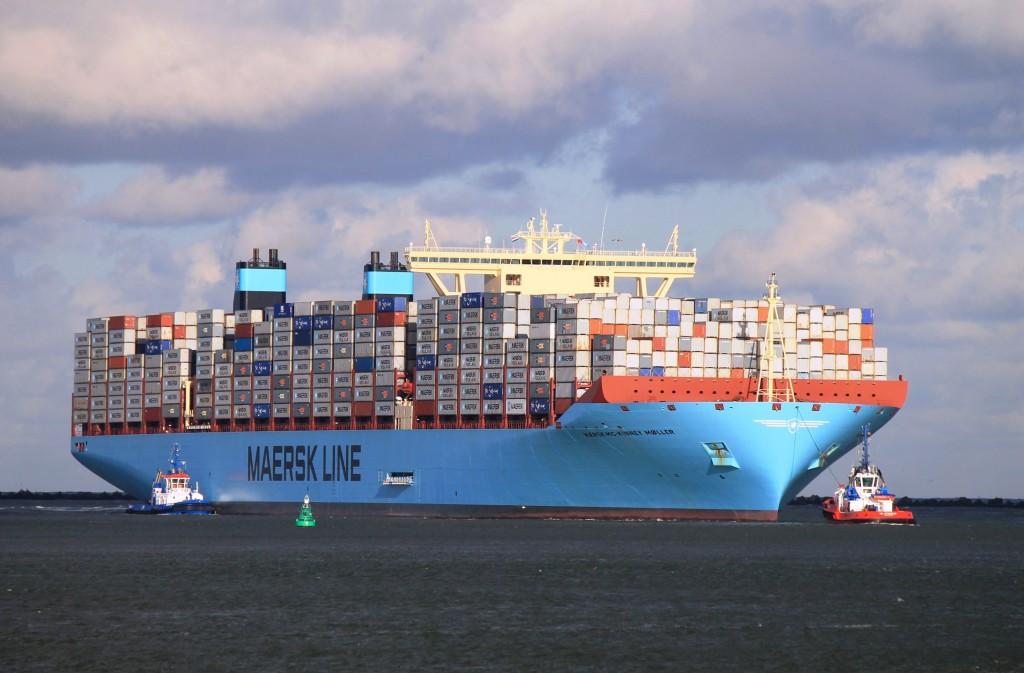Back in April the United States Navy revealed that they had installed a 3D printer aboard one of their ships, the USS Essex. This news was somewhat expected as 3D printing is a technology which the Navy, as well as other  branches of the U.S. military has shown interest in, in the past. Although, at the time, the Navy was only testing the machine out, and providing a training mechanism for sailors while the ship was at port, such technology is sure to eventually be used on board ships during actual military operations.
branches of the U.S. military has shown interest in, in the past. Although, at the time, the Navy was only testing the machine out, and providing a training mechanism for sailors while the ship was at port, such technology is sure to eventually be used on board ships during actual military operations.
The Navy is not the only group using 3D printers on board ships. In fact, one of the world’s largest container shipping companies, Maersk, headquartered in Copenhagen  Denmark, is using 3D printers as a way to fabricate spare parts on container ships.
Denmark, is using 3D printers as a way to fabricate spare parts on container ships.
The company which currently has a fleet of over 500 container ships, has been transporting goods around the globe for the last 110 years. This month they revealed that they had 3D printers installed on board their ships. The printers currently are capable of printing with ABS thermoplastics, however, the company is investigating the possible future utilization of powder based metal laser sintering machines.
When a part breaks on a container ship in the middle of the Ocean, it’s certainly not an easy or cheap task to provide a replacement part to that vessel, in a speedy manner. Time equals money when you are shipping millions of products across an ocean, thus 3D printing seemed to be the perfect solution.
“The idea is that we send the blueprint to the crew on board the tanker vessel, they will push ‘print’ and in a matter of hours get the part,” explained Märtha Josefine Rehnberg, a category manager at Maersk Procurement.
Engineers can be sitting at a desk in Copenhagen, get a call from a ship halfway around the world, send a simple .STL file to a computer on board that ship, and within a few hours a replacement part can be printed out and installed on the vessel.
Certainly the fact that thermoplastics are the only material able to be printed at this time on Maersk’s vessels, limits the type of parts able to be fabricated, however, within a few years time we may begin seeing more sophisticated laser, metal sintering printers making their way on board ships from all of the major container shipping companies out there. As prices drop and technology advances, it will be hard to ignore the utility that such machines possess. Let us know what you think about this use of 3D printing on board shipping vessels, in the Maersk 3D printing forum thread on 3DPB.com. Maersk has created the following video to explain how all this works, which you can watch below.
Subscribe to Our Email Newsletter
Stay up-to-date on all the latest news from the 3D printing industry and receive information and offers from third party vendors.
Print Services
Upload your 3D Models and get them printed quickly and efficiently.
You May Also Like
Creality To Go Public
Creality is one of the largest 3D printing companies in the world. It probably ships more 3D Printers than anyone else. In a competitive market, the company has gone from...
Why Align Technology’s Slowdown Still Matters to 3D Printing
Align Technology (Nasdaq: ALGN), the company behind Invisalign clear aligners, reported lower-than-expected results for the second quarter of 2025. While the slowdown is tied to broader economic and dental industry...
Zhejiang University Researchers Potentially Develop Sustainable Closed Loop Resins
Zhejiang University researchers have come up with a thrilling discovery that could make resins much more sustainable. In a paper for Science, “Circular 3D printing of high-performance photopolymers through dissociative...
Carlsmed to Go Public in $101 Million Bid to Scale 3D Printed Spine Implants
Carlsmed is preparing to go public. The med-tech company, based in Carlsbad, California, plans to offer 6.7 million shares at a price range of $14 to $16 per share, which...






























